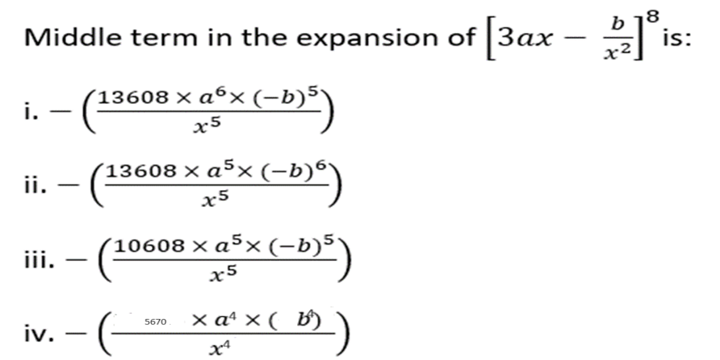Question
Statements: I ≥ J ≤ K = L ≤ M; G ≤ H < I; M ≤
N < O ≥ P Conclusions: I. M < H II. N ≥ J III. M ≥ H In the question, assuming the given statements to be true, find which of the following conclusion(s) among the three conclusions is/are true and then give your answer accordingly.Solution
H < I ≥ J ≤ K = L ≤ M No relationship can be established between M and H but it will make a complementary pair. Hence either conclusion I or II is true. J ≤ K = L ≤ M ≤ N < O ≥ P N ≥ J. Hence conclusion II is true.


If the sum of the coefficients in the expansion of (a + b)n is 16384, then the greatest coefficient in the expansion is
Find both the maximum value and the minimum value respectively of 3a4 minus; 8a3 + 12a2 minus; 48a + 25 on the interval...

The perimeter of a rectangular field is 34 metres and its area is 60 m2 . What is the length of the diagonal of this field?
Find the coefficient of x⁴ in (2x – 3/x)⁶.
The coefficients of ap and aq in the expression of (1 + a)p+q are
(i) Equal
(ii) Equal with opposite sign...
If the sum of the coefficients of all even powers of x in the product (1 + x + x2 + … + x2n) (1 – x + x2 – x...



